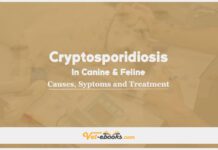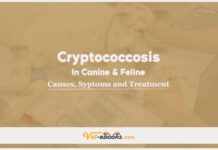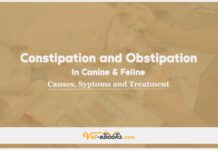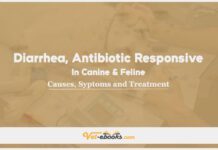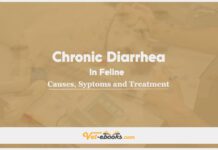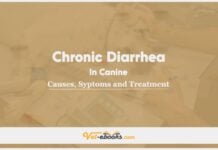Anorexia In Canine and Feline: Causes, Symptoms and Treatment
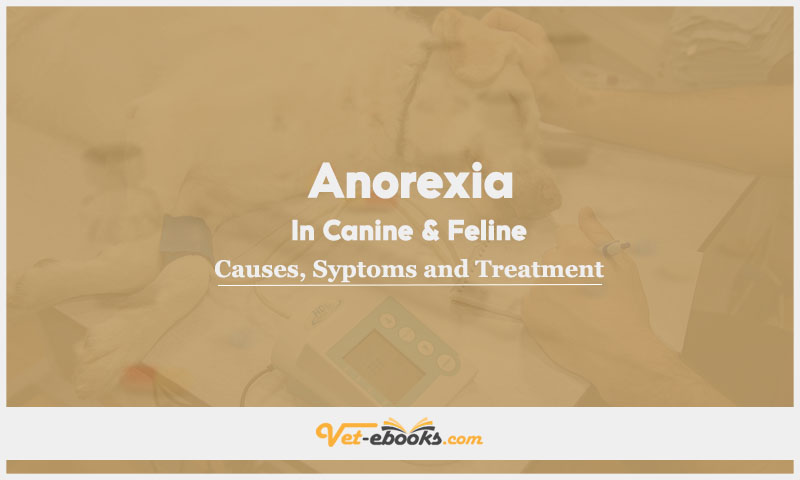
Overview
- Anorexia is a diminished or absent desire to consume food.
- Hyporexia is a diminished desire to eat.
- Dysrexia is a change in appetite or the absence of a stable appetite.
- Anorexia nervosa is a reduction in food consumption, resulting in manifestations such as weight loss, dehydration, nutritional deficiencies, and sarcopenia.
Causes of Anorexia In Canine and Feline
Causes
- Potential signs of a wide range of systemic illnesses.
- Psychological factors, such as food aversion, stress, and changes in routine or surroundings.
- Pain.
- Toxic substances and the undesirable effects associated with drug administration.
- Gastrointestinal and pancreatic disorders.
- Acid-base disorders.
- Organ failure, such as cardiac, renal, and hepatic failure.
- Endocrine and metabolic illnesses.
- Neoplasia.
- Infectious diseases.
- Immune-mediated diseases.
- Respiratory diseases.
- Musculoskeletal illnesses.
- Neurological illnesses.
- Various factors, such as motion sickness and excessive environmental temperature.
Risk factors
- Nausea.
- Pain.
- Dietary modifications.
- Environmental stress.
- Concerns related to palatability, such as anosmia.
- Endocrine variables, including malfunctions in the thyroid and adrenal glands.
- Systemic disease.
Pathogenesis of Anorexia In Canine and Feline
- Appetite regulation is a multifaceted interplay involving the central nervous system, the surrounding environment, and the gastrointestinal tract.
- The hypothalamus and brainstem have neurons responsible for regulating feeding, serving as primary receivers for sensory and metabolic inputs.
- These cellular populations have projections to multiple locations of the brain and demonstrate significant interconnections.
- Various sensory signals have an impact on appetite, encompassing factors such as olfactory perception, gustatory experience, tactile sensation, and thermal properties of food.
- Stomach and duodenum distention can contribute to the modulation of appetite.
- Metabolic signals of hunger and satiety encompass a diverse range of peptides and hormones that are secreted during periods of fasting and feeding.
- Glucose, amino acid, and fatty acid levels in the bloodstream play a role in regulating these sensations.
- Insulin, glucagon, somatostatin, cholecystokinin, peptide tyrosine tyrosine (PYY), and pancreatic peptide provide a centrally mediated effect to reduce appetite.
- Adipocytes produce leptin, which acts on specific receptors in the hypothalamus to increase metabolic activity and suppress appetite.
- Neuropeptide Y released from the gastrointestinal tract after dietary restriction elicits hunger and reduces energy expenditure.
- Ghrelin, a hormone synthesized in the stomach, exhibits prokinetic properties and enhances appetite by suppressing the production of leptin while promoting the development of neuropeptide Y.
- Serotonin is a central mediator through a serotonergic pathway that traverses in close proximity to the ventromedial hypothalamus nuclei, which is known as the satiety center.
- Dopaminergic tracts in the hypothalamus facilitate the control of food intake.
- Environmental factors, such as the specific geographical and temporal aspects of meals, acquired behaviors, and circadian rhythms, regulate appetite.
- Brain lesions that impact the hypothalamus alter appetite.
- Any condition that diminishes cerebral arousal decreases food consumption.
- Proinflammatory cytokine release can lead to hyporexia in animals with inflammatory and neoplastic illnesses.
- Exogenous and endogenous toxins, such as liver and renal failure, cause hyporexia.
- Hyporexia is commonly related to neoplasia, metabolic abnormalities, pancreatitis, and primary gastrointestinal illnesses.
- Fear, pain, and stress decrease appetite.
Symptoms (History & Physical Examination) of Anorexia In Canine and Feline
History
- Refusing food consumption is an often observed initial concern among pet owners, leading to considerable emotional discomfort.
- Owners report a noticeable decrease in body weight as a result of this behavior.
Physical Examination
- The results differ based on the root cause.
- Low body condition score and muscle wasting vary depending on the time during which food intake has been reduced.
- Patients diagnosed with pseudoanorexia may exhibit symptoms such as halitosis, excessive salivation, challenges in grasping or chewing, and odynophagia.
Diagnosis of Anorexia In Canine and Feline
1- From History and Physical Examination
2- Diagnostic Procedures
CBC/BIOCHEMISTRY/URINALYSIS
- Variations in abnormalities across different underlying disorders.
- May be normal.
OTHER LABORATORY TESTS
- The history, physical examination, and preliminary tests may call for additional diagnostic tests to investigate specific disorders.
- To establish a conclusive diagnosis, do heartworm serology, tick serology, retrovirus serology, thyroid level assessment, and histologic/cytologic evaluation of tissue or cell samples.
- Baseline cortisol or adrenocorticotropic hormone (ACTH) stimulation test to exclude the possibility of hypoadrenocorticism, even in the absence of notable laboratory alterations.
Imaging:
- Thoracic and abdominal imaging examinations, such as radiography and ultrasound, are frequently incorporated into the minimal database for the purpose of identifying anatomical or functional problems.
- Videofluoroscopy and endoscopy are potential diagnostic procedures to assess the function and visual characteristics of the pharynx, esophagus, and gastrointestinal tract.
3- Differential Diagnosis
- Pseudoanorexia is a condition in which animals feel hungry but cannot consume food due to disorders that cause dysfunction or pain in the facial, neck, oropharyngeal, and esophageal regions.
- Animals with anosmia frequently demonstrate diminished appetite.
Treatment of Anorexia In Canine and Feline
General
- Immediate consideration should be given to assisted feeding for seriously malnourished patients who have a body weight loss of 10% or more, hypoalbuminemia, low body condition score, indications of muscle wasting, and/or chronic disease processes.
- In patients with good physical condition with a reduced appetite, consider providing assistance with feeding if their food intake falls below their resting energy requirement (RER) over a period of 3-5 days without any signs of improvement.
- The RER can be calculated using the formula RER = 70 x (body weight kg^0.75).
- Avoid force-feeding, especially in cats, due to its potential relationship with conditioned food aversions.
Medications
- Pharmacological therapies targeted at enhancing appetite should not be utilized as a substitute for diagnostic endeavors intended at identifying the specific cause(s) of diminished appetite.
- At the presynaptic level, mirtazapine blocks inhibitory α2‐adrenergic receptors, which makes norepinephrine and serotonin (5-HT) come out more. On the postsynaptic neuron, it blocks both 5-HT2 and 5-HT3 receptors.
- 5-HT1 receptor activation elicits depressive effects, whereas 5-HT2 and 5-HT3 receptor suppression leads to anti-emetic and appetite-stimulating effects.
- The dosage for canines is 0.5 milligrams per kilogram every 24 hours.
- Cats use the FDA-approved medication Mirataz® at a dose of 1.5-inch strip to the inner pinna of the ear once daily for 14 days.
- In cats with chronic kidney illness, an alternative approach to stimulate appetite is to administer 1.88 mg of medication per cat orally every 24 to 48 hours.
- Capromorelin acts as an agonist on the ghrelin receptor, hence inducing appetite centrally within the hypothalamus.
- Entyce®, which refers to capromorelin, has received approval from the FDA for its use as an appetite stimulant in dogs at a dose of 3 mg/kg orally every 24 hours and is considered safe for long-term use.
- Although capromorelin has not yet been approved in cats, a safety trial has been published, and clinical trials are currently being conducted.
- Diazepam, intravenously (0.1 mg/kg every 24 hours).
- Avoid giving oral diazepam to cats due to the potential occurrence of idiosyncratic hepatotoxicosis.
- Cyproheptadine (orally at a dosage of 0.2–0.4 mg/kg, around 10–20 minutes before feeding) to stimulate appetite.
- If ileus is present along with anorexia, prokinetic medications like metoclopramide, ranitidine, or erythromycin may be helpful.
- Anti-emetic medications such as ondansetron and dolasetron reduce the symptoms of nausea or vomiting.
- Maropitant acts as an analogue of substance P by binding to neurokinin-1 receptors located in the chemoreceptor trigger zone (CRTZ) and the vomiting center.
- Cerenia®, also known as maropitant, as an antiemetic (1 mg/kg subcutaneously or intravenously, or 2 mg/kg orally, with a frequency of once every 24 hours in dogs) and (1 mg/kg subcutaneously, intravenously, or orally, once every 24 hours in cats).
- Omega-3 fatty acids decrease inflammatory cytokines, hence exhibiting a minor positive effect on appetite.
Some Notes:
Avoid using antiemetics and prokinetics in cases where there is a presence or suspicion of gastrointestinal obstruction.
Tip
Do You Want To Increase Your Veterinary Knowledge and Practical Skills?
You Can Now Browse and Download +3000 Books For Veterinary Professionals & Students Online.
Download Veterinary Books

